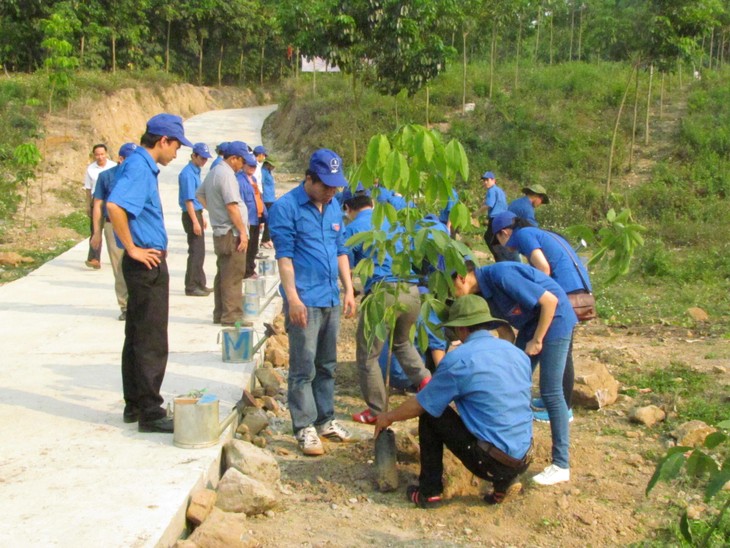Changes after 3 years of building new rural areas in Ho Chi Minh city
(VOVworld) – With the motto “mobilizing local resources and people’s labor to serve the people”, the pilot program on building new rural areas in 6 communes in Ho Chi Minh city has fundamentally fulfilled criteria set by the National Steering Board on building new rural areas. The results have enhanced people’s trust and consensus on the policy.

Young volunteers get involved in building new rural areas
|
72-year old Pham Van Cao has witnessed changes in Xuan Thoi Thuong commune at various periods of time. When the commune began to build new rural areas, he was one of the first farmers to donate 200 square meters of land for expanding inter-hamlet and inter-communal roads. 7,000 households in 6 pilot communes have donated 725,000 square meters of land, worth over 610 billion VND for the construction of cultural and public works. Mr. Cao says: “The new rural development program is jointly undertaken by the State and people. Two expanded roads crossed my land. The value of the land is not small. But compared with our ancestors’ sacrifice for national defense, my donation of land for road building is well worth it. My commune has changed for the better. We have access to electricity and a good irrigation network; our children go to school near their homes; and we have a good neighborhood community.”
After 3 years of developing new rural areas in 6 pilot communes, 1,000 public works were built including 240 roads and 100 water supply and irrigation works and 430 makeshift houses were converted into durable homes. The total cost was 100 million USD, one third of which was contributed by the people. Tan Thong Hoi and Thai My communes achieved all 19 criteria, and the other 4 communes finished 17 criteria. The communes have narrowed the land for rice cultivation to plant more subsidiary crops with higher profits. The models of growing orchids and bonsai trees, raising dairy cows, and handicraft have been widely replicated. The monthly average income has increased by 4 to 5 million VND.
Developing new rural areas is not only to build public works but also improve people’s living conditions and keep the environment clean. Nguyen Thi Hoang Anh, Chairwoman of Nhon Duc commune’s People’s Committee says: “In order to ensure sustainable rural development, we encourage people to learn a vocation and become knowledgeable. If laborers are not trained and assisted to find jobs, they can only do general work with low pay. So we can not achieve our target. We assist in placing people in vocational training classes according to their age and pool social resources to finance poor students and cover production costs.”
The successful models in 6 communes will be applied to another 50 communes and are expected to fulfill all 19 new rural criteria by 2015. The authorities will focus on urban agriculture development by fine tuning mechanisms and policies to attract investment in agriculture and assist farmers in production and sales. Le Thanh Liem is Director of the Ho Chi Minh city’s Department of Agriculture and Rural Development and Deputy Head of the city’s Steering Committee on building new rural areas. “The whole political system will get involved in infrastructure development and production. The city will tighten financial management and issue specific instructions. The people’s supervisory role is highlighted. Other agencies are asked to oversee the use of all resources including budget investment for effective rural development.”
The improved appearance of the countryside is proof of effective policies to bring a better life for people in rural areas.
Bich Huyen